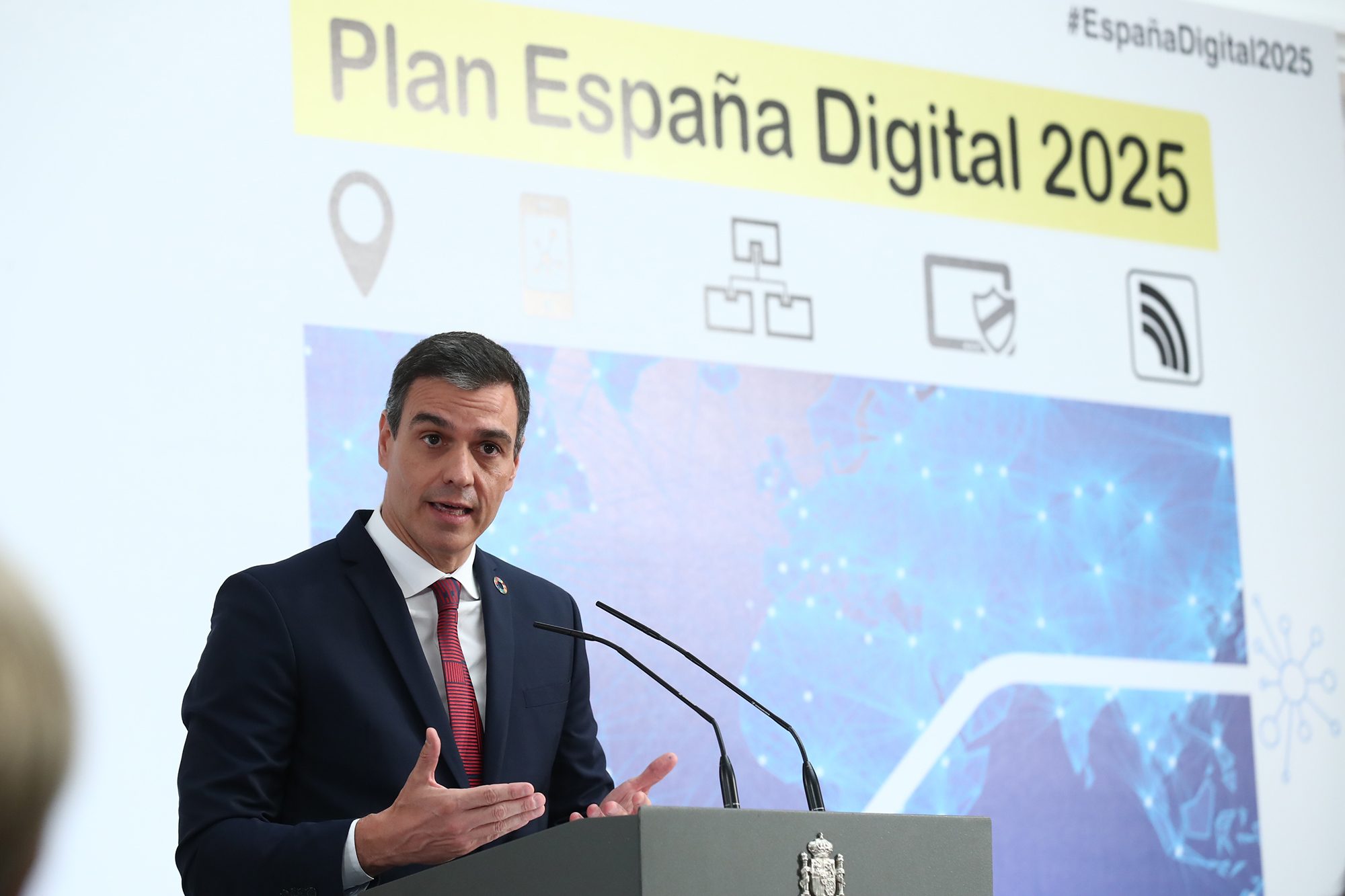Spain Cyber security, data privacy with GDPR and LOPDGDD Synergy

Spain has emerged as a proactive player in cybersecurity and data privacy, balancing EU-wide regulations with national innovations to address evolving digital threats. This article explores Spain’s regulatory framework, enforcement mechanisms, and strategic initiatives shaping its digital ecosystem in 2025.
Regulatory Framework
1. Data Privacy: GDPR and LOPDGDD Synergy
Spain’s Organic Law on Data Protection and Digital Rights Guarantee (LOPDGDD) supplements the GDPR with localized enhancements:
- Expanded Digital Rights:
- Workplace digital disconnection: Employees can disconnect from work-related digital tools post-working hours.
- Posthumous data rights: Heirs can access or erase deceased individuals’ data unless prohibited.
- Minors’ consent: Stricter age verification (14+ years) for data processing consent.
- Stricter Processing Rules:
- Criminal conviction data: Prohibited unless under official authority.
- Marketing consent: Explicit opt-in required (unticked boxes invalid).

2. Cybersecurity: NIS2 and National Strategy
Spain’s Law on Cybersecurity Coordination and Governance (effective 2025) transposes the EU’s NIS2 Directive, featuring:
- National Cybersecurity Center (CNC): Central hub for threat coordination, incident response, and cross-sector collaboration.
- Sector-Specific Mandates: Critical infrastructure must adopt encryption, risk assessments, and incident reporting within 72 hours.
Entity Classification:
| Category | Supervision | Sectors |
|---|---|---|
| Essential Entities | Proactive | Energy, transport, banking, healthcare |
| Important Entities | Reactive (on-demand) | Postal services, waste management, education |

Enforcement Landscape
1. Spanish Data Protection Agency (AEPD)
- Recent Penalties:
- Generali España: €4 million fine for a 2025 breach exposing 1.6 million individuals due to inadequate security.
- Failure to Cooperate: €96,000 fine (reduced from €160,000) for ignoring AEPD investigation requests.
Fine Structure:
| Infringement | Max Fine |
|---|---|
| Minor | €10M / 2% global turnover |
| Serious | €20M / 4% global turnover |
| Very Serious | Same as serious |
2. Cybersecurity Enforcement
- INCIBE: Spain’s National Cybersecurity Institute drives public-private collaboration, focusing on SMEs and critical sectors.
- Sectoral Regulators: Financial institutions comply with DORA (Digital Operational Resilience Act), while energy and healthcare follow NIS2 mandates.

Strategic Investments and Market Growth
Spain’s Digital Spain 2025 Agenda allocates €20 billion to digital transformation, including:
- €1 billion for cybersecurity: Enhancing threat detection, workforce training, and IT-OT convergence in industrial systems.
- 5G Security: Securing 82.3% 5G coverage by 2025 with a focus on network slicing and IoT vulnerabilities[15].
- AI Integration: IBM’s 2024 partnership with Spain to develop ethical AI models and strengthen data governance[15].
The cybersecurity market is projected to grow at 7.16% CAGR, reaching €3.21 billion by 2029, driven by ransomware threats (Spain ranks fifth globally)[7][15].

Future Outlook
- IT-OT Convergence: EspañaSec 2025 highlights securing industrial control systems against AI-powered threats.
- Workforce Development: Training 20,000 specialists in AI, IoT, and cybersecurity by 2025[12].
- AI Regulation: AEPD’s focus on auditing AI systems for bias and transparency under the AI Sandbox Initiative[10].
- Cross-Border Collaboration: Strengthening EU-wide cyber resilience through ENISA’s Threat Landscape 2024 frameworks[7].
Spain’s cybersecurity and data privacy ecosystem combines GDPR rigor with innovative national laws, strategic investments, and cross-sector collaboration. As digital transformation accelerates, Spain prioritizes securing critical infrastructure, upskilling talent, and aligning with EU regulations like NIS2 and DORA. Organizations must navigate this dual compliance landscape to mitigate risks and leverage Spain’s growing digital economy.
The "Digital Spain 2025" agenda is focused on the digital transformation of Spain over the next five years. It is aligned with the digital strategy of the European Union (EU), and is based on public-private partnerships. The agenda includes nearly 50 measures based on ten strategic priorities. Key strategies being implemented include:
- Digital Connectivity: Ensuring suitable digital connectivity for the entire population to eradicate the digital gap between rural and urban areas, with the goal of 100% population access to 100 Mbps coverage by 2025. This involves reinforcing and reorienting available instruments to extend domestic connectivity and actively integrate Spain into cross-border infrastructures. A key component of this is a plan to position Spain as the digital infrastructure hub for cross-border interconnections in southern Europe. Measures include a digital connectivity plan, a new General Telecommunications Law, and a plan to attract cross-border digital infrastructures.
- 5G Technology: Continuing to lead the roll-out of 5G technology in Europe and incentivizing its contribution to increased economic productivity, social progress, and regional structure. The goal is for the entire radioelectric spectrum to be ready for 5G by 2025. This involves renewing the National 5G Plan, aligning with the EU's action plan for 5G, and reinforcing Spain's leadership in 5G development and deployment. Measures include the release of the second digital dividend, the assignment of priority frequency bands for 5G, and the development of 5G transport corridors.
- Digital Skills: Strengthening digital skills in employees and the population, with an emphasis on labor market needs and closing the digital gap in education. The goal is for 80% of people to have basic digital skills by 2025, with half of them being women. This involves promoting universal basic digital skills, equipping workers with the digital skills required in the workplace, and addressing the demand for specialists in digital technologies. Measures include the Educa en Digital program and the Uni-Digital plan.
- Cybersecurity: Strengthening Spanish cybersecurity capabilities, with the goal of providing 20,000 specialists in cybersecurity, artificial intelligence (AI), and data by 2025. The National Cybersecurity Center (CNC) will serve as the central coordinating authority. Key elements include the establishment of the National Cybersecurity Center (CNC) as the central coordinating authority, risk assessments, implementation of security measures, and incident reporting. Measures include a cybersecurity help line, strengthening cybersecurity for citizens and SMEs, and promoting Spain as an international cybersecurity hub.
- Digitalization of Public Administration: Promoting the digitalization of public administration services, especially in employment, justice, and social policies, by updating technology infrastructures. The goal is for 50% of all public services to be available via a mobile app by 2025, simplifying and personalizing relations between the public and companies or public authorities. This includes simplifying citizen relations with public administrations, integrating all administrations in the digital transformation, and updating technological infrastructures. Measures involve modernizing digital services, consolidating IT infrastructures, and developing cognitive automation services.
- Digitalization of Companies: Accelerating the digitalization of companies, with a focus on micro-SMEs and start-ups. The goal is for at least 25% of SME business volume to come from e-commerce by 2025. This involves increasing support for SMEs in their digital transformation, promoting national and international digital entrepreneurship, and strengthening the private capital sector in Spain. Measures include a plan to promote the digitalization of SMEs, the Acelera PYME program, and the creation of a National Entrepreneurship Office (ONE).
- Digitalization of the Productive Model: Accelerating digitalization of the productive model through digital transformation driver projects in strategic economic sectors like agri-food, mobility, health, tourism, trade, and energy. These projects seek to reduce CO2 emissions by 10% by 2025 due to economic digitalization effects. The projects are designed to foster new business models, knowledge exchange, and sustainable practices. Measures include projects focused on digitalizing the agro-food sector, healthcare, mobility, tourism, and commerce.
- Audiovisual Hub: Improving Spain's attractiveness as a European audiovisual platform for generating business and jobs, with the target of increasing audiovisual production in Spain by 30% by 2025. Measures include the Plan Spain Audiovisual Hub, which focuses on reinforcing the competitiveness and internationalization of Spanish audiovisual production.
- Data Economy and AI: Transitioning to a data economy, guaranteeing safety and privacy, and harnessing the opportunities offered by AI, with the goal of at least 25% of companies using AI and big data within five years. This involves promoting AI as an engine for innovation and economic growth, developing an ethical and legal framework for AI, and strengthening competitiveness through R&D in digital enabling technologies. Measures include a National AI Strategy, the creation of a Data Office and Chief Data Officer (CDO), and a cloud strategy.
- Digital Rights: Guaranteeing rights in the new digital environment, especially labor rights, consumer rights, and the rights of citizens and companies. The goal is to draw up a digital rights charter. This involves reinforcing citizen rights in the digital world and ensuring people have the resources to live in digital spaces. Measures include participation in European initiatives and international debates on digital rights and the modernization of the labor framework for remote work.
- Closing Digital Gaps: Contributing to closing the digital gaps related to socio-economic factors, gender, generation, territory, or environment.
These strategies are supported by a significant investment of public and private funds. Public investment in the period 2020-2022 is expected to be around 20 billion euros, with approximately 15 billion euros coming from EU programs. Private sector investment is estimated at around 50 billion euros. The government will also create a public-private Digital Transformation Advisory Committee to facilitate dialogue and involvement from economic and social stakeholders.
Citations:
[1] https://www.nucamp.co/blog/coding-bootcamp-spain-esp-spain-cybersecurity-job-market-trends-and-growth-areas-for-2025
[2] https://www.lamoncloa.gob.es/lang/en/gobierno/councilministers/paginas/2025/20250114-council-press-conference.aspx
[3] https://www.sngular.com/insights/352/nis2-directive-the-draft-law-in-spain-enters-the-approval-phase
[4] https://www.insideprivacy.com/eu-data-protection/spanish-data-protection-authority-issues-guidance-on-data-spaces/
[5] https://resourcehub.bakermckenzie.com/en/resources/global-data-and-cyber-handbook/emea/spain/topics/regulators-enforcement-priorities-and-penalties
[6] https://caseguard.com/articles/the-lopdgdd-personal-privacy-protection-in-spain/
[7] https://ismg.io/espanasec-2025-securing-critical-infrastructure-in-an-era-of-it-ot-convergence/
[8] https://www.incibe.es/en/incibe/corporate-information/what-we-do
[9] https://www.trade.gov/country-commercial-guides/spain-digital-economy
[10] https://resourcehub.bakermckenzie.com/en/resources/global-data-privacy-and-cybersecurity-handbook/emea/spain/topics/regulators-and-enforcement-priorities
[11] https://matomo.org/faq/new-to-piwik/is-matomo-analytics-lopdgdd-lssi-compliant/
[12] https://dig.watch/resource/digital-spain-2025
[13] https://portal.mineco.gob.es/RecursosArticulo/mineco/ministerio/ficheros/210902-digitalisation-of-public-admin-plan.pdf
[14] https://portal.mineco.gob.es/RecursosArticulo/mineco/ministerio/ficheros/210204_Digital_Spain_2025.pdf
[15] https://www.mordorintelligence.com/industry-reports/spain-cybersecurity-market
[16] https://intelligence-sec.com/events/cyber-intelligence-europe-2025-2/
[17] https://www.asdevents.com/event.asp?id=25288
[18] https://resourcehub.bakermckenzie.com/en/resources/global-data-and-cyber-handbook/emea/spain/topics/regulators-enforcement-priorities-and-penalties
[19] https://administracionelectronica.gob.es/pae_Home/pae_Actualidad/pae_Noticias/2025/Enero/noticia-2025-01-24-Reunion-Consejo-Nacional-Ciberseguridad.html?idioma=en
[20] https://www.auraquantic.com/digital-spain-program/
[21] https://www.dataguidance.com/news/spain-council-ministers-approves-law-transposing-nis-2
[22] https://siberx.org/conference/cyber-intelligence-europe-2025/
[23] https://www.thesign.media/blog/spains-tech-boom-and-new-cosmic-heights-for-cybersecurity
[24] http://espanadigital.gob.es/en/implementation-agenda
[25] https://www.telecompaper.com/news/spain-to-set-up-new-national-cybersecurity-centre-for-key-infrastructure--1524689
[26] https://portal.mineco.gob.es/RecursosArticulo/mineco/ministerio/ficheros/210204_Digital_Spain_2025.pdf
[27] https://digital-strategy.ec.europa.eu/en/policies/cybersecurity-act
[28] https://www.pinsentmasons.com/out-law/analysis/spain-new-data-protection-digital-rights-law
[29] https://globalbim.org/info-collection/digital-spain-2025/
[30] https://www.dataguidance.com/jurisdiction/spain
[31] https://www.centraleyes.com/privacy-laws/spain/
[32] https://www.mofo.com/resources/insights/250107-privacy-data-security-predictions
[33] https://2b-advice.com/en/2025/02/04/these-are-the-highest-fines-in-january-2025/
[34] https://www.dataguidance.com/notes/spain-data-protection-overview
[35] https://www.herbertsmithfreehills.com/notes/data/2025-posts/international-data-privacy-day-our-predictions-for-2025
[36] https://leglobal.law/countries/spain/looking-ahead-2025-spain/
[37] https://www.privacyworld.blog/2023/05/changes-to-spanish-data-protection-laws/
[38] https://www.datavant.com/international-privacy-blogs/top-5-data-protection-trends-to-watch-in-2025
[39] https://www.forrester.com/blogs/a-2025-global-privacy-prospectus/
[40] https://www.linkedin.com/pulse/evolving-landscape-data-privacy-cybersecurity-laws-2025-howic
[41] https://www.cliffordchance.com/insights/thought_leadership/trends/2025/data-privacy-legal-trends.html
[42] https://www.instagram.com/lextalk.world/p/DFuJI28vhnj/
[43] https://www.bakermckenzie.com/en/insight/publications/2025/01/data-privacy-cyber-developments
[44] https://www.mckinsey.com/capabilities/risk-and-resilience/our-insights/europes-next-cybersecurity-hub-what-makes-spain-a-leading-contender
[45] https://www.thalesgroup.com/en/countries-europe/spain/news/thales-s21sec-reveals-key-trends-will-transform-cybersecurity-2025
[46] https://cookie-script.com/blog/data-privacy-trends-2025
[47] https://tech.eu/2025/01/21/spanish-cybersecurity-startup-zynap-raises-5-7m/
[48] https://www.dlapiper.com/en/insights/publications/2025/01/dla-piper-gdpr-fines-and-data-breach-survey-january-2025
[49] https://www.aepd.es/en/areas/innovation-and-technology
[50] https://ismg.io/espanasec-2025-securing-critical-infrastructure-in-an-era-of-it-ot-convergence/
[51] https://www.letslivealife.com/post/spain-travel-new-data-privacy-law-that-will-impact-your-travel
[52] https://www.welivesecurity.com/en/business-security/evolving-landscape-data-privacy-key-trends-shape-2025/
[53] https://www.mordorintelligence.com/industry-reports/spain-cybersecurity-market
[54] https://www.cliffordchance.com/content/dam/cliffordchance/briefings/2025/02/data-privacy-legal-trends-2025.pdf
[55] https://www.nucamp.co/blog/coding-bootcamp-spain-esp-most-in-demand-tech-job-in-spain-in-2025
[56] https://www.giiresearch.com/report/moi1644880-spain-cybersecurity-market-share-analysis-industry.html









